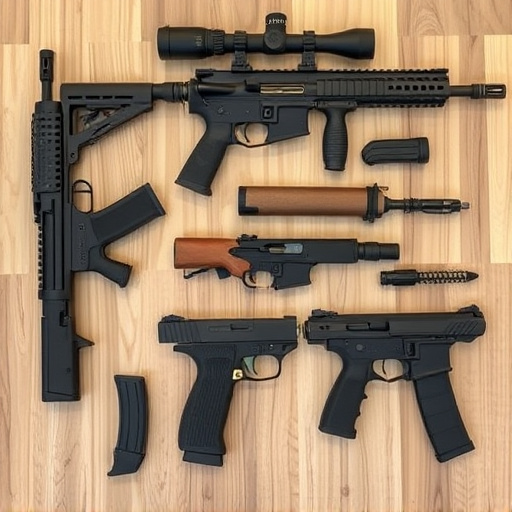Non-lethal home defense weapons, including stun guns, pepper spray, Tasers, and batons, offer safe alternatives to firearms for personal protection. With various options available, these tools temporarily incapacitate or deter attackers, providing users with control in emergencies. Strategic use involves understanding tool capabilities, regular training, secure storage, and prioritizing safety. The expanding market includes innovative technologies like GPS tracking and smart alarms, ensuring individuals have access to tailored, effective self-defense solutions.
“In today’s world, exploring safe and effective personal defense options is a prudent step towards safeguarding yourself and your loved ones. This article delves into the realm of non-lethal home defense weapons, offering insights on various tools designed to deter threats without causing severe harm. From pepper spray and stun guns to noise makers and personal alarms, we’ll explore the types available, their effective use, and optimal storage strategies, empowering individuals to make informed choices for enhanced security.”
Understanding Non-Lethal Home Defense Weapons
Non-lethal home defense weapons are an essential component of personal safety, offering a range of tools designed to protect individuals and their properties without causing permanent harm. These weapons are particularly valuable for those who prefer not to rely solely on physical force or conventional firearms. From stun guns to pepper spray, each option serves a unique purpose in deterring and incapacitating intruders.
Understanding the capabilities and limitations of these devices is crucial when considering non-lethal home defense. Stun guns, for instance, deliver an electric shock that can temporarily disable an attacker, providing valuable time for escape or reinforcement. Pepper spray creates temporary blindness and breathing difficulties, making it effective in disorienting intruders without causing severe injury. Selecting the right non-lethal weapon involves evaluating factors like ease of use, range, and duration of effect to ensure preparedness and peace of mind in potentially dangerous situations.
Types of Non-Lethal Self-Defense Tools Available
The market for non-lethal self-defense tools is diverse and ever-growing, offering a range of options for individuals seeking to protect themselves without resorting to lethal force. These tools are designed to incapacitate or deter attackers, providing users with a sense of security and control in various situations. From stun guns to pepper spray, each option has its unique capabilities and applications. Stun guns, for instance, deliver an electric shock that can temporarily paralyze an assailant, giving the user time to escape. Pepper spray is another popular choice, creating temporary blindness and coughing fits in the target, allowing the user to create distance from a potential threat.
Beyond these common defenses, there are specialized non-lethal home defense weapons tailored for specific needs. Tasers, for example, use electrical current to disrupt muscle control, making them effective at keeping attackers at bay. Batons and tear gas can also be used in close-quarters combat, providing users with powerful yet non-fatal means of self-defense. Some innovative tools even incorporate technology like smart alarms or GPS tracking, enhancing not only protection but also the ability to quickly alert authorities or loved ones in an emergency.
Effective Strategies for Using and Storing Non-Lethal Defense Equipment
When utilizing non-lethal home defense weapons, it’s crucial to employ strategic techniques for maximum effectiveness. Start by assessing your environment and identifying potential hazards or areas that require immediate intervention. Understand the range, reach, and usage limitations of each tool to ensure safe and precise deployment. For instance, pepper spray should be aimed at eyes and face, while stun guns are most effective when used to disrupt an assailant’s balance. Regular training sessions can significantly enhance your proficiency and confidence in these methods.
Proper storage is equally vital for maintaining the integrity of non-lethal defense equipment. Keep them out of reach of children and unauthorized individuals, preferably locked away in a secure cabinet or safe. Ensure each item is clearly labeled with its purpose and date of purchase to facilitate easy identification. Regularly inspect the devices for any signs of damage or wear and perform necessary maintenance according to manufacturer guidelines. This proactive approach will not only ensure their reliability when needed but also promote a safer living environment.
